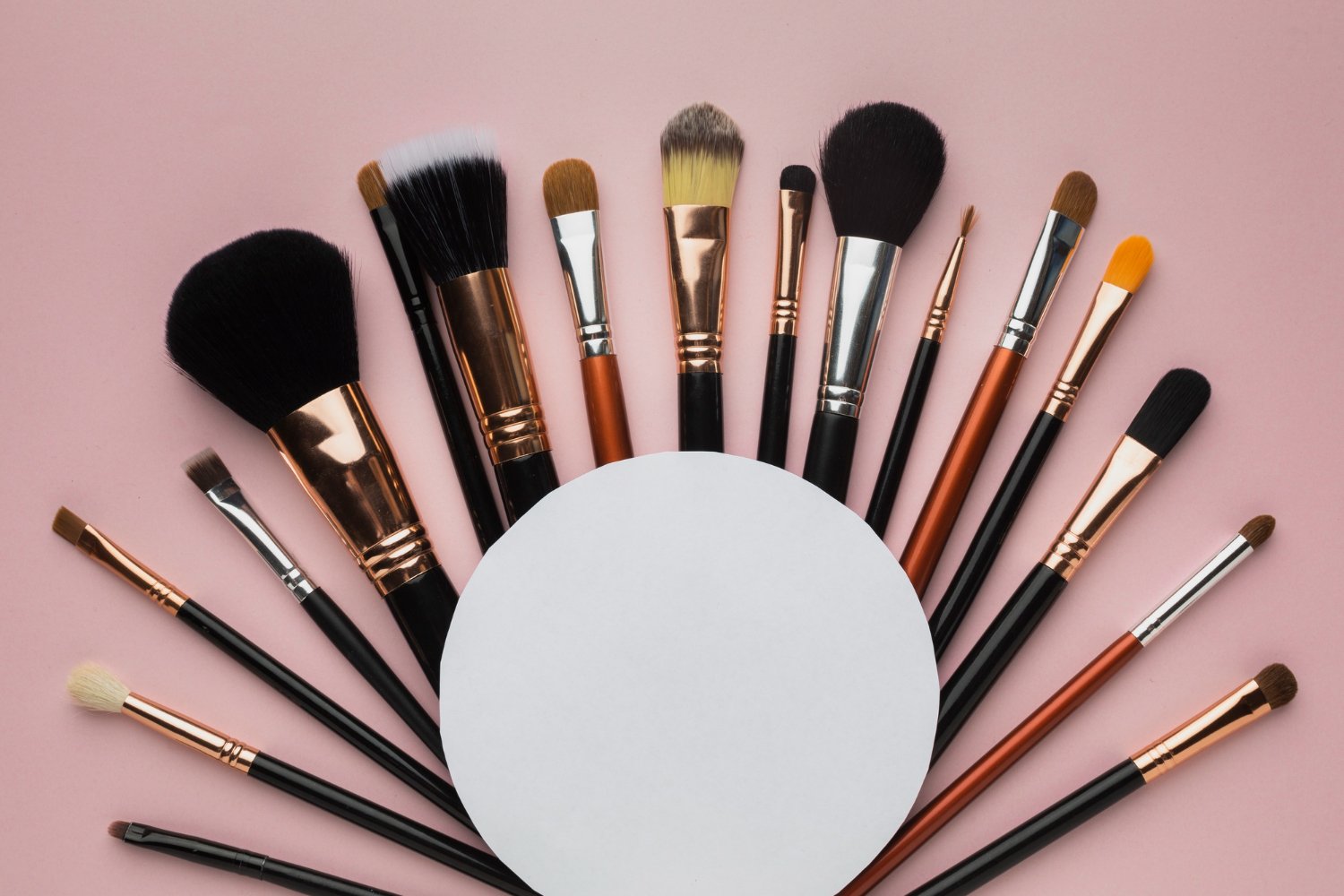Introduction
How to dry makeup brushes: Maintaining your makeup brushes properly is essential for the health of your skin as well as the brushes’ lifespan. Drying is a crucial component in brush maintenance. Inadequate drying techniques can cause bacterial growth, damage, and eventually a reduction in brush effectiveness. We’ll go over specific methods for drying your makeup brushes, advice on how to keep them in good condition, and answers to frequently asked questions in this extensive guide.
Why Proper Drying Matters
Preventing Bacterial Growth
Makeup brushes, if not dried correctly, can harbor bacteria that may lead to skin infections or acne. The bristles, being damp, create an environment conducive to bacterial growth. Proper drying ensures that your brushes remain hygienic, protecting your skin from potential harm.
Preserving Brush Shape and Function
When brushes are not dried properly, the bristles can become misshapen or frayed. This affects the application of makeup, leading to uneven results. By drying your brushes correctly, you help maintain their original shape and functionality, ensuring smooth and flawless makeup application every time.
Extending Brush Lifespan
Frequent exposure to moisture and improper handling can accelerate the wear and tear of your brushes. Proper drying techniques help preserve the integrity of the bristles and the glue holding them together, extending the lifespan of your brushes and saving you from frequent replacements.
Step-by-Step Guide to Cleaning and Drying Makeup Brushes
Choose the Right Cleanser
How to dry makeup brushes: The first step in making sure your brushes are cleaned without damage is choosing the right cleanser. Choose a light baby shampoo or a gentle brush cleanser. Over time, harsh soaps can weaken the bristles and cause the adhesive to become less sticky.
Wet the Bristles
Rinse the brush bristles under lukewarm water. Be cautious to keep the water away from the ferrule (the metal part of the brush), as excessive water can cause the glue to weaken and the bristles to shed.
Apply Cleanser
Put a tiny bit of cleaner on the wet bristles. Using your fingers or a brush cleaning pad, gently work it into a lather. Make sure to clean the bristles’ tips and bases, paying particular attention to regions where product accumulation is obvious.
Rinse Thoroughly
Use lukewarm water to rinse the bristles until the water flows clean. This shows that all of the residues and cleaner have been eliminated. Hot water might harm the brush fibers, so stay away from it.
Gently Squeeze Out Excess Water
Gently press extra water away from the bristles with a fresh, soft cloth. The bristles may become broken or lose their shape if you twist or pull them.
Methods for Drying Makeup Brushes
Air Drying
How to dry makeup brushes: Air drying is a popular and effective method. Here’s how to do it correctly:
Air Drying Process
Reshape the Bristles: After cleaning, use your fingers to reshape the bristles to their original form. This helps maintain their shape and ensures even makeup application.
Lay Brushes Flat: The brushes should be placed on a flat table or a fresh, dry towel. To prevent water from leaking into the ferrule, make sure the bristles are hanging off the surface’s edge.
Allow to Dry: Give the brushes at least a day to air dry. To speed up drying and avoid any unwanted smells, make sure they are in a well-ventilated place.
Using a Brush Drying Rack
One specific item made to maximize brush drying is a brush drying rack. It offers a number of advantages:
Advantages of a Brush Drying Rack
Prevents Bristle Deformation: Keeps brushes in their natural shape during drying.
Speeds Up Drying: Improves air circulation around the brushes, reducing drying time.
How to Use a Brush Drying Rack
Insert Brushes into the Rack: Place the brush handles into the rack slots, ensuring that the bristles hang down and are not touching any surfaces.
Allow to Dry: Let the brushes dry on the rack for 12 to 24 hours. The rack’s design allows for optimal air flow, helping brushes dry faster and more thoroughly.
Using a Brush Spinner
An instrument that aids in rapidly eliminating extra water from brushes is a brush spinner:
Benefits of a Brush Spinner
Reduces Drying Time: Efficiently removes excess water, cutting down on overall drying time.
Effective Water Extraction: Helps in removing more water compared to manual methods.
How to Use a Brush Spinner
Place Brushes in the Spinner: Follow the manufacturer’s instructions to insert the brushes into the spinner.
Activate the Spinner: Spin the brushes to remove excess water.
Finish Drying: After spinning, lay the brushes flat on a towel or use a drying rack to complete the drying process.
Tips for Maintaining Your Makeup Brushes
Clean Brushes Regularly
How to dry makeup brushes: Regular cleaning prevents buildup of makeup products and bacteria. Clean your brushes after each use if they are used with liquid products, or at least once a week for powder products.
Avoid Using Heat
Never dry your brushes with a hair dryer or other heat source. Heat can shorten brush life by weakening the adhesive and damaging the bristles.
Store Brushes Properly
Keep your brushes somewhere dry and clean. To keep them clean and in shape, use a brush holder or protective case. To avoid damaging brushes, do not store them with the bristles facing down.
Replace Brushes Periodically
Even with proper care, brushes will eventually wear out. Replace brushes when you notice signs of wear, such as shedding bristles, changes in texture, or a loss of shape.
Troubleshooting Common Issues
Brushes Losing Shape
If your brushes lose their shape, it may be due to improper cleaning or drying. Always reshape bristles before drying and use a brush holder to maintain their form.
Stiff Bristles
Stiff bristles can result from using too much cleanser or inadequate rinsing. Use a small amount of cleanser and ensure thorough rinsing to prevent bristles from becoming stiff.
Brushes Not Drying Fast Enough
If brushes are taking too long to dry, consider using a brush drying rack or spinner to enhance air circulation. Ensure the drying area is well-ventilated to facilitate quicker drying.
Conclusion
How to dry makeup brushes? Maintaining the quality of your cosmetic brushes, extending their lifespan, and preserving the health of your skin all depend on properly drying them. Whether you use a brush spinner, air drying, or a brush drying rack, using these specific methods will help you get the best results. You’ll always have clean brushes and perfect makeup application if you follow these tips in your brush care regimen.
Frequently Asked Questions
Q:1 How often should I clean my makeup brushes?
A:1 Ideally, clean your brushes after each use if they are used with liquid products. For brushes used with powder products, cleaning once a week is sufficient.
Q:2 Can I use a regular towel to dry my brushes?
A:2 Yes, a clean, soft towel can be used to dry brushes. However, using a microfiber towel or a towel specifically designed for brush drying is preferable.
Q:3 How long does it take for brushes to air dry?
A:3 Air drying typically takes 12 to 24 hours, depending on the size of the brushes and the drying environment.
Q:4 Can I use a hair dryer to speed up the drying process?
A:4 No, using a hair dryer or any heat source is not recommended, as it can damage the bristles and glue. Always air dry your brushes.
Q:5 What should I do if my brushes smell after drying?
A:5 A lingering smell could be due to residual cleanser or improper drying. Clean the brushes again thoroughly and ensure they are completely dry before storing them.
See More



